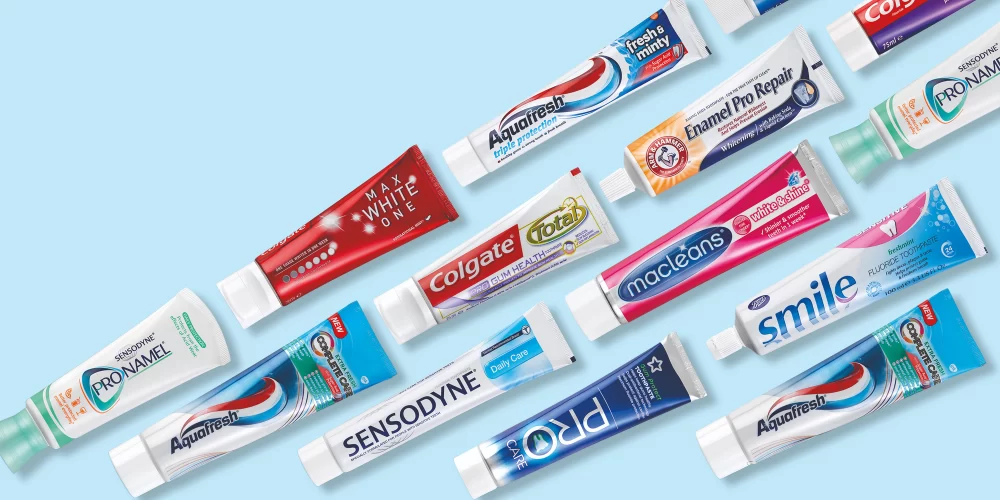
- Understanding-Plaque-and-Tartar-Formation
- Why-Choosing-the-Right-Toothpaste-Matters
- Key-Ingredients-in-Toothpaste-for-Plaque-and-Tartar-Control
- Real-Life-Case-Study-Effective-Toothpaste-Use
- Complementary-Care-and-Professional-Advice
1. Understanding Plaque and Tartar Formation
Plaque is a sticky, colorless biofilm composed of bacteria, saliva, and food particles that constantly forms on our teeth. If plaque is not effectively removed through regular brushing and flossing, it hardens over time into tartar (also known as calculus), which firmly adheres to the tooth surfaces and can only be removed by a dental professional.
The buildup of plaque and tartar is not merely a cosmetic issue; it is the primary cause of gum inflammation, cavities, and periodontal disease. This makes controlling and removing these deposits essential for maintaining oral health.
1.1 The Role of Plaque in Oral Health
Plaque bacteria produce acids that erode enamel and irritate gums. Left unchecked, this leads to tooth decay and gum disease.
1.2 How Tartar Complicates Dental Care
Once plaque mineralizes into tartar, it creates a rough surface that attracts more plaque, accelerating oral health problems. Tartar near the gum line causes inflammation and can progress to serious periodontal disease if untreated.
2. Why Choosing the Right Toothpaste Matters
Not all toothpastes are created equal when it comes to plaque and tartar control. The best toothpaste for plaque and tartar control and removal care contains specific active ingredients that target these issues effectively. Selecting an appropriate toothpaste enhances daily oral hygiene routines, helping to prevent plaque buildup before it hardens and supporting the breakdown of existing tartar.
Using a toothpaste that lacks these active ingredients may leave plaque and tartar unchecked, increasing the risk of cavities and gum problems despite regular brushing.
2.1 Impact on Long-Term Oral Health
Consistent use of a plaque and tartar control toothpaste contributes to healthier gums, fresher breath, and less frequent dental cleanings.
2.2 Personal Preferences and Sensitivities
Some toothpastes offer additional benefits like sensitivity relief or whitening. It’s important to balance these with effective plaque control properties to meet individual needs.
3. Key Ingredients in Toothpaste for Plaque and Tartar Control
Understanding the ingredients that make a toothpaste effective against plaque and tartar helps in making an informed choice. Here are some of the most impactful components:
3.1 Pyrophosphates and Zinc Citrate
These compounds help prevent the mineralization of plaque into tartar, making them staples in tartar control toothpastes.
3.2 Fluoride
Fluoride strengthens tooth enamel and aids in repairing early decay caused by plaque acids, making it a vital ingredient in any toothpaste.
3.3 Antibacterial Agents
Ingredients like triclosan or stannous fluoride reduce bacterial populations, targeting the root cause of plaque formation and gum inflammation.
3.4 Abrasives
Gentle abrasives assist in physically removing plaque from teeth surfaces without damaging enamel, important for maintaining cleanliness and brightness.
4. Real-Life Case Study: Effective Toothpaste Use
Consider Mark’s experience, who struggled with stubborn tartar buildup despite brushing regularly. After switching to a toothpaste formulated with pyrophosphates and stannous fluoride, combined with improved brushing technique, he noticed a significant reduction in tartar formation within months. His dentist confirmed healthier gums and cleaner teeth at subsequent visits.
This case highlights that choosing the right toothpaste tailored for plaque and tartar control is a crucial part of oral care, but it also requires consistent and proper brushing habits.
5. Complementary Care and Professional Advice
While the best toothpaste for plaque and tartar control and removal care is vital, it should be part of a comprehensive dental care routine. Regular flossing, mouth rinses, and professional dental cleanings play irreplaceable roles in maintaining optimal oral health.
Visiting a trusted dental provider like Dentistry Toothtruth can help identify the most suitable products and personalized care plans, ensuring that plaque and tartar never stand a chance against your smile.
Remember, the right toothpaste combined with proper techniques and professional guidance forms the cornerstone of effective plaque and tartar management.







 Smiles Divine Dental4.0 (25 review)
Smiles Divine Dental4.0 (25 review) Premier Dental of Edison4.0 (285 review)
Premier Dental of Edison4.0 (285 review) Jennifer Chiang, DDS5.0 (221 review)
Jennifer Chiang, DDS5.0 (221 review) Glamorous Smile Dental Spa5.0 (17 review)
Glamorous Smile Dental Spa5.0 (17 review) Jennifer Barrett0.0 (0 review)
Jennifer Barrett0.0 (0 review) Northview Dental4.0 (301 review)
Northview Dental4.0 (301 review) The Importance of Oral Health Education During Pregnancy for a Healthy Pregnancy
The Importance of Oral Health Education During Pregnancy for a Healthy Pregnancy Best Tips for Brushing Your Teeth Properly for Healthy Gums: Essential Techniques for Oral Health
Best Tips for Brushing Your Teeth Properly for Healthy Gums: Essential Techniques for Oral Health Why Skipping Dental Checkups Can Lead to Bigger Oral Health Problems
Why Skipping Dental Checkups Can Lead to Bigger Oral Health Problems Advantages of Porcelain Dental Restorations
Advantages of Porcelain Dental Restorations How Can Diabetes Cause Tooth and Gum Problems? Preventing and Managing Oral Health Issues
How Can Diabetes Cause Tooth and Gum Problems? Preventing and Managing Oral Health Issues Healthy Habits for Promoting Good Oral Health and Hygiene: Tips for a Healthy Smile
Healthy Habits for Promoting Good Oral Health and Hygiene: Tips for a Healthy Smile